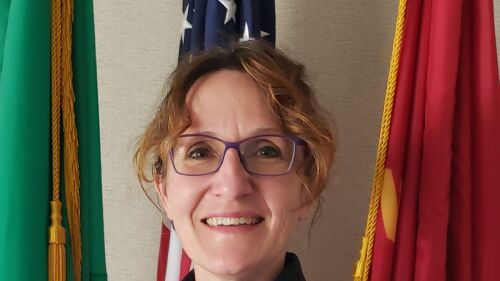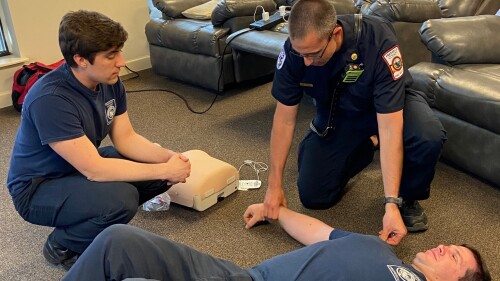Disciplining an employee is never an enjoyable task but it’s a responsibility all organizations eventually face. The way discipline is imposed will have long-lasting effects on the employee. Many times, the employee can become bitter, cynical, less productive, or completely disengaged.
In public service agencies, the disciplined employee will likely remain with the agency for decades. We need to evaluate what responsibility our organizations have in administering a disciplinary program that will engage the employee, create an atmosphere of fairness and foster a culture of communication. The disciplinary process can offer the opportunity for an organization to impact an employee in a positive manner while correcting an action that resulted in discipline.
Additionally, in today’s competitive market for qualified workers, having a successful alternative discipline program can be considered a retention strategy that focuses on keeping qualified personnel. We cannot afford to lose good people due to a poorly administered discipline process.
|More: Dealing with defensive people. Identify and conquer the fight-or-flight response with these four simple steps
Alternative discipline’s history and intent
An alternative discipline program was first implemented by the Los Angeles County Sheriff’s Department (LASD) in April 2009. The program, Education-Based Discipline, was implemented to focus on providing education and training to the disciplined employee to prevent future disciplinary actions.
The program was available to all sworn officers and professional/civilian employees who were facing unpaid suspension days. Since its inception, over 65 local, state and federal agencies have implemented portions of this alternative discipline program.
I am very proud to have been involved with the creation, implementation and administration of this program since its inception.
Alternative discipline processes
The alternative discipline procedures that LASD implemented can be modified to fit any organization. The basic processes are as follows:
- Alternative discipline is offered only as an option to the existing discipline program. This prevents alternative discipline from being contested by the employee’s union.
- All employee protections regarding the discipline process remain intact.
- It applies to all employees and ranks for specified policy violations.
- Most classes and training are offered in an on-duty capacity to reinforce the educational aspect of the training.
- Each four-hour period of training will earn one alternative discipline credit that then offsets one day of an unpaid suspension.
- It is not used for written reprimands, demotions, reductions in rank, or terminations.
- Once the employee agrees to the alternative discipline program, the person has one year to complete the classes and training. However, there is an expectation that the program is completed within a 90-day period as a benefit for the employee.
The above points only briefly describe the basic processes of an effective alternative discipline program. This process can be modified to meet your agency’s needs.
Education and training options
The goal of an alternative discipline program is to focus on the employee and determine the causal factors that resulted in discipline being administered. Identifying courses and training for relevant policy violations will help supervisors choose appropriate courses for each policy violation.
To help aid in this process, a police psychologist created six categories that could be applied to most policy violations. Each category would also have course recommendations for policy offenses. The categories that were created are shown below with corresponding course recommendations:
- A. Problem-solving and self-management. Critical thinking course, ethics, leadership training, tactical communication, motivational conversation
- B. Skill enhancement. Driving, safety courses, skill-centered courses
- C. Boundary recognition. Ethics, cultural diversity, anger management
- D. Substance misuse/abuse awareness. Alcoholics Anonymous meetings, psychological treatment, counseling
- E. Character reinforcement. Leadership training, ethics, behavior/stress management, relationship management
- F. Flexible options. Finance management, relationship management, psychological assessment, literature readings
The education and training options are applied to each applicable policy violation for your agency. For example, an employee who has been disciplined for “off-duty conduct that causes embarrassment to the agency,” would have the associated options of A, C, E and F for training. A manager would be able to select the applicable option and appropriate courses pertinent to the incident. This provides an easy-to-use procedure for selecting education and training options while creating agency-wide consistency for the discipline process.
Engagement, recidivism and validation
Prior to alternative discipline being put into effect at LASD, a 5-year study had been conducted. The study determined that 75% of employees who had been previously disciplined were never disciplined again. Statistically, that would be considered a success. However, we need to ask the following questions regarding this perceived success:
- Had the employees simply shut down and resorted to a “retired-on-duty” syndrome?
- Were they failing to be proactive within their job responsibilities?
- Did they project a negative attitude toward the agency, the public and peers?
The questions are valuable in assessing the effectiveness of an agency’s disciplinary process. It is important to consider that most disciplined employees will remain with the agency until retirement. We have a responsibility for creating a process where an employee remains engaged and contributes to the organization after being disciplined.
After alternative discipline was implemented at the LASD, an external entity evaluated the program in its entirety. It was determined that the recidivism rate for employees had dropped to less than 10% for the 4½-year period after the program was implemented, which was a validation for the program.
What can we do?
Evaluate the discipline process of your agency. Ask the following questions in your assessment:
- Is the process solely punitive in nature?
- Does the process focus on employee-centered discipline that addresses the causal factors?
- How can a process be implemented to create an opportunity for the organization to impact the employee in a positive manner through relevant education and training?
The current job market gives employees many options for work. A poorly implemented disciplinary process can cause our people to leave sooner than expected. We have the power to create a culture of discipline within our agencies that fosters a positive experience for employees that lasts for decades, if not forever.
If you want more information about implementing an alternative discipline program, please contact me for more detailed information.


















